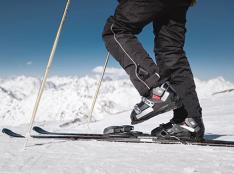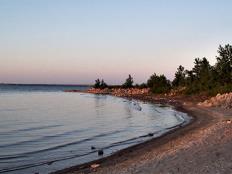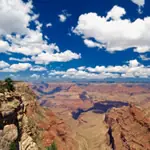Venturing outdoors is easier—and cushier—than ever: campgrounds have fire pits, electrical hookups, bathrooms and showers. But what happens when you go beyond the safety of your site and into the woods? Even casual hikers should brush up on their outdoor survival skills. Here are nine survival guides that could make all the difference.
How to Stay Alive in the Woods
By Bradford Angier 1 of 10
Focusing on four key components of outdoor survival—sustenance, warmth, orientation and safety—this book covers how to build shelters, how to make clothing, what plants to eat, and how to protect yourself. This is a must-read for backpackers and anyone who likes to explore beyond park boundaries.
Find a
CampsiteFieldbook
By Boy Scouts of America 2 of 10
You don't have to be a Boy Scout to buy this book. Compiled from the experience of millions of scout leaders, this manual is an excellent reference for anyone who loves the outdoors, covering both smart and ethical behavior. Learn everything you ever wanted to know about leading a group, preparing for a trek, reducing your footprint, planning an adventure, and understanding and appreciating nature.
Find a
CampsiteU.S. Army Survival Manual
By United States Department of Defense 3 of 10
Just like the Army, this manual offers no-frills, direct, straightforward information for anyone who wants to know what it takes to survive, in any climate, on their own, with limited resources. In addition to navigation, edible and non-edible plants, survival medicine and water resources, this manual also addresses things like weapons and tools and the will to survive. If you want a more hard-core survival guide, this one's for you.
Find a
CampsiteSAS Survival Handbook
By John "Lofty" Wiseman 4 of 10
Round out your military-themed training by taking cues from both U.S. and British troops. Written by a former Special Air Service solider, the SAS Survival Handbook provides survival techniques for any climate, on land or at sea. Hikers, campers and sailors alike can benefit from this book.
Find a
CampsiteMountaineering: The Freedom of the Hills
5 of 10
This reference book has long held the top spot as the best resource for climbers and mountaineers. Known as the "mountaineer's bible," it covers everything from climbing knots and navigation to expedition planning and first response.
Find a
CampsiteA Field Guide to Edible Wild Plants
By Lee Allen Peterson 6 of 10
Eating the wrong plant can be deadly in the wilderness. While many plants are edible, there are also many lookalikes that you need to be wary of. As plant species vary depending on region, make sure you have a book that covers the area you plan to explore. This particular book covers Eastern and Central North America with more than 370 wild plants and 37 poisonous lookalikes.
Find a
CampsiteSnow Sense: A Guide to Evaluating Snow Avalanche Hazard
By Jill A. Fredston and Doug Fesler 7 of 10
Skiers, snowshoers, mountaineers, cold-weather campers and anyone else who likes to play in the snow should read this book. Learn all about terrain, snowpack, weather and human factors that trigger avalanches.
Find a
CampsiteThe Outward Bound Wilderness First-Aid Handbook
By Jeffrey Issac 8 of 10
Every good survival guide collection should include a detailed book on wilderness first-aid. And what better source to turn to than Outward Bound—a non-profit educational organization that's been teaching outdoor leadership for more than 50 years. Adventurers especially would benefit from this handbook, that covers diagnostic and first-aid procedures to use when immediate help isn't an option.
Find a
CampsiteThe Survival Handbook: Essential Skills for Outdoor Adventure
By Colin Towell 9 of 10
In addition to serving three years as chief instructor at the U.S. Navy SERE (Survival, Evasion, Resistance and Escape) School, author Colin Towell was the Royal Navy's Chief Survival Instructor. His handbook covers everything from what to pack to what to do in the wilderness.



.jpg?height=174&mode=Thumbnail&width=234)



Discuss This Article